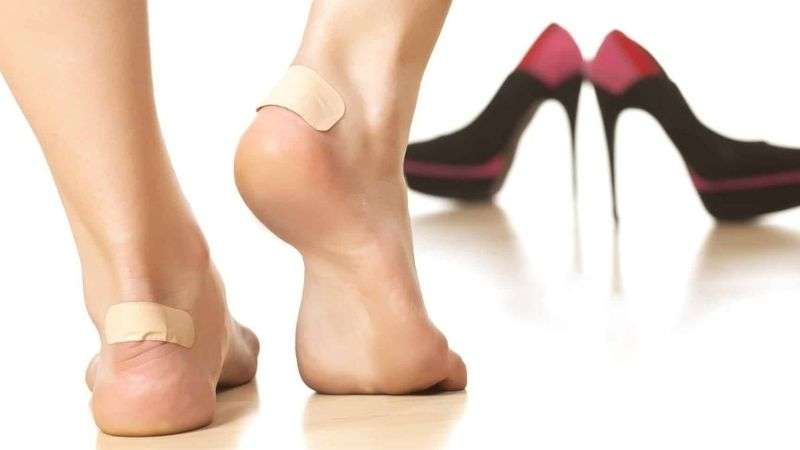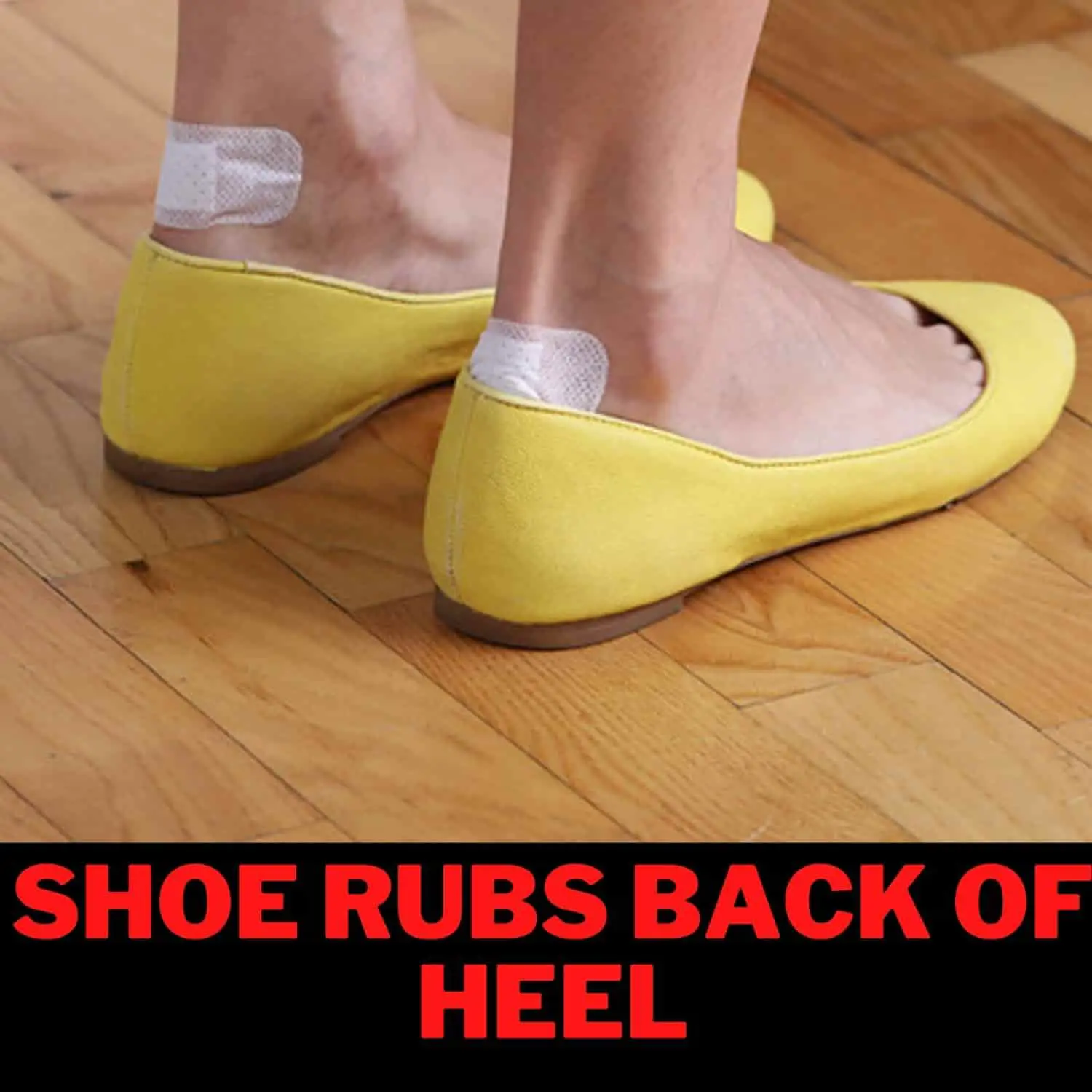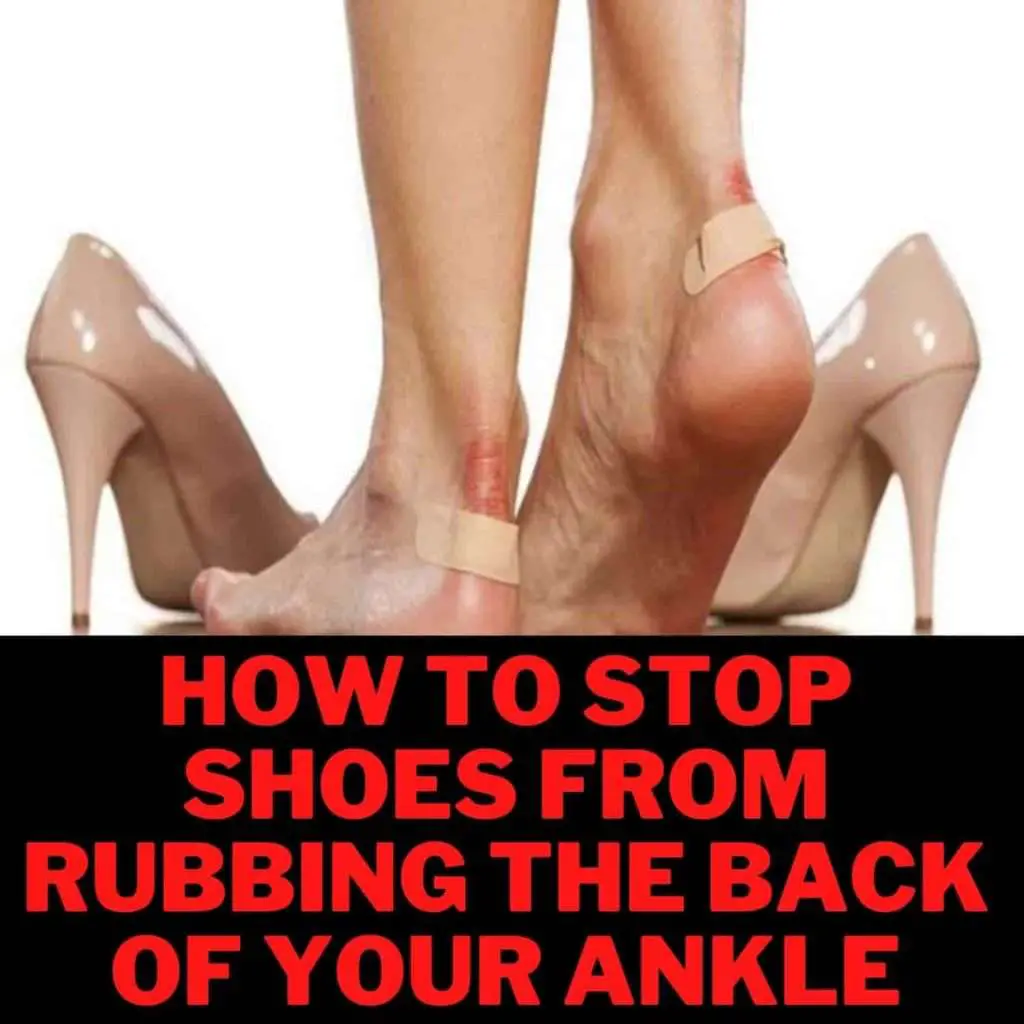How Should Your Shoes Fit
Shoes should be fitted but not snug. If theyre too big, they will inevitably fall off. Too small and they will give you short- and possibly long-term foot problems. Footwear is meant to support and protect your feet, not do damage to them!
Even if you have been a specific size of shoe for a number of years, each store varies ever so slightly. It is always best to try on your regular size but try the next size up or down, depending on how they fit. Many stores now cater for wide and narrow feet as well so dont forget to choose the right option for you. Some styles of shoes are best for narrow feet even the widest fit isnt right. On the other hand, some wide-fit styles dont look right in a narrow version! A wide fit in one store might still be too narrow for you but in another store, its a perfect fit. Shoe shopping is all about trial and error and thats where the fun is!
How To Break In The Heel Of A Boot
Even though boots dont have a rim around the heel, they can rub uncomfortably on your feet, creating friction spots and blisters. If the leather is stiff, boots can crease. Those creases can dig into your heels, feet, and ankles.
Breaking in new boots can take some time. You might not want to wear them all day at first. If you leave the house in them, bring a backup pair of shoes to change into later.
Your feet will swell during the day, making the boots more uncomfortable. If you continue to walk in them with swollen feet, you increase the risk of feeling pain.
To soften them quickly, try mashing the heel of the boot with your hands and feet. You might be afraid that doing this will ruin your shoes. However, theyll take the right shape when you step into them again, and the leather at the back of the boot should be softer.
The Ice Bag Technique
If your shoes are not made of leather or heat does not seem to work, then another way to stretch out tight-fitting shoes overnight is the ice bag trick.
Fill two plastic bags with water and placing them inside your shoes. Place the pair of shoes in your freezer for the night. The water should freeze and expanded, stretching out the toe.
This technique, however, will need a bit of patience and a bit of trial and error, since you do not want to overstretch your shoes but also need to fill them with enough water to make a stretch difference.
Take the shoes out in the morning and you should have nice-fitting shoes with that cooling effect for a hot summer day.
Also Check: Is Dhgate Shoes Legit
What Should You Avoid
After getting a blister, you should avoid wearing the same shoe or heel. Else, it would make it more painful than ever as your skin needs to heal. And without any resting period, this cant be possible. As a result, you would often get more blister or bacterial infections in that wounded area. Indeed, just because of wearing the same bitting shoe or heel over time to time.
How To Prevent Blisters From Shoes On The Back Of Heel

Blisters are a pervasive problem if you have an active lifestyle. Frequent walking, running, and moving around can get you a blister. It is also known as shoe bite. Shoe bites can be painful at times when no proper treatment is taken. Blisters are the fluid-filled sacs that one can experience while running and walking. The main cause behind getting a blister is friction between your heels, toes, and shoes. When your skin rubs against your shoe or socks, you get a shoe bite.
When the rubbing between your skin and the shoe increases, you are at a higher risk of getting a blister. The higher rubbing can be due to faster walk, running for long hours, uncomfortable and unfitted shoes, or wearing a new shoe. Blisters can hinder your walk or run. Marathon runners are most affected by shoe blisters. Blisters can get worse if not treated on time. When you feel a blister stop your activity because of heat pressure and moisture, these foot blisters can worsen and cause bacterial infection.
It is better if you take proper precautions for getting a shoe bite. Note that your shoe must be fitted and comfortable. If you are wearing a new shoe, take a short walk rather than a long run. Give time to a new shoe to get adjusted to your feet. Slowly and gradually increase your walk, and when you feel comfortable with your new shoe, you can go back to your active routine.
Contents
You May Like: How Do You Wash Hey Dudes
How To Stop Shoes From Rubbing The Back Of Your Heel
When your shoes rub the back of your heels, you often get a painful reaction to it. New shoes are notorious for this problem they rub the back of your heels, giving you bruises and aching swells.
This problem can make it difficult to walk and will distract you often. Ignoring the pain does not work either, as frequent bruises on a particular skin spot can cause discoloration.
Eventually, you lose interest in wearing those shoes regardless of how much you love them. After all, it is best to wear other comfortable shoes even if you dont love them.
If you are keen on solving these issues, here are five tricks that work like magic and you wont ever have bruised heels.
In This Post
Using Moleskin On Your Shoe:
It can be annoying to have moleskin attach to the back of your heel when you are bare feet. And it can be even more irritating to attach and reattach moleskin to your feet every time you go out. To save yourself from this trouble you can keep moleskin attached to your shoes.
To do that you have to:
- Take a piece of moleskin large enough to cover the area of the shoe that hurts your heel.
- Detect the place you want to cover and mark it using a pencil. Clean the place you are covering.
- Then stick the moleskin using duct tape to make sure it sticks there effectively.
This is how moleskin can help you protect the back of your heel rubbing the shoe.
Also Check: How To Clean White Mesh Shoes With Hydrogen Peroxide
Insoles For A Proper Fit
Insoles add that slight lift to your feet which decreases the area in contact with your heel. And while insoles can also provide a slightly tight fit, this can help reduce the movement between your skin and the shoe, which reduces the chances of forming blisters. Plus, they can also make your overall shoe experience more supportive and comfortable.
Use Custom Made Insoles For Better Fit And Comfort
Get custom comfort thats made just for your feet with FitMyFoot Comfort Plus Insoles and Sandals to protect your feet from blisters and calluses. No two feet are the sameeven people with the same foot size are not exactly the same, and even your left and right feet are not exactly the same. Thats why you need custom designed insoles and sandals to help protect your feet and stay comfortable longer. You can rely on our scientifically-proven, comfortable, and affordable custom insoles that cost hundreds less than medical-grade orthotics by visiting Get Custom Made Insoles and Sandals.
Shop Premium Custom Recovery Sandals
You May Like: Best Way To Clean Hey Dudes
How To Prevent Shoes From Rubbing The Back Of The Ankle
Learn some simple hacks, and you will be able to stop shoe rubbing your ankle and walk comfortably and confidently.
- Proper fitting with insoles- Avoid buying excess tight-fitting shoes. Next, attach insoles inside the shoes this will add a little raise to your foot, which lessens the surface area in touch with the heel. Attaching insoles also ensures a little close-fit, decreasing movement between the shoe and the ankles skin. Adding insoles reduces the possibilities of blisters forming. And makes your walking journey more comfortable.
- Usage of Moleskin- Moleskin is a tough cotton fabric with one side similar to felt and gluey on the other. Sticking Moleskin inside the shoes will reduce the rubbing. You can use Dr. Scholls, Premier, CVS Health, any of their Moleskin. Moleskin can be used both on the skin of your heels and also inside the shoes.
Steps to use moleskin on skin:
Steps to use moleskin on shoes:
How Do You Keep Your Feet From Sliding In Heels
There is almost nothing worse in a pair of shoes than the feeling of them rubbing against your heel. You know as soon as the rubbing begins that it will end in a painful blister unless you take the shoes off altogether.
But thankfully, there are a variety of ways to stop shoes from rubbing the back of your heel while remaining on the go.
What You Will Need
Also Check: Ladies Dress Shoes For Wide Feet
Keep Your Feet Moisture
Keeping your feet dry is another method of avoiding shoe bites. One way is to invest in good socks made with synthetic material because they will help absorb moisture. The other way is using talcum powder and antiperspirants. Using antiperspirants and talcum powder helps in keeping your feet dry and reduction of foot blisters. You can also use cornstarch. Sprinkle corn starch or talcum powder in your socks. If you indulge in a prolonged run activity, reapply the talcum powder or cornstarch in the middle of the activity.
Break In Your New Boots

Its common knowledge that new shoes or boots hurt more than old ones because they are still hard, resulting in more skin rubbing. It will take some time before they can comfortably conform to the size and shape of your feet.
You can prevent your boots from rubbing your heels by breaking them in faster. Do so by using a shoe stretcher, inserting bags of them in them, then freezing them, putting on thick socks or multiple socks at once, or buying blister plasters.
Related: How do you break in new boots fast?
Also Check: Dansko Plantar Fasciitis Review
Avoid Shoes Causing Blisters Make Sure Your Shoes Fit Well
Ill-fitting shoes can cause any number of foot problems, some of which are associated with shoes rubbing your heels. Making sure your shoes are the right size for your feet is important. There are lots of ways to find out the correct size of your feet for shoes and boots.
Shoes that are too big can benefit from over-the-counter insoles to take up the slack.
Shoes which are too small will cramp your feet leading to pain. I am sure we have all been there with a new pair of shoes we couldnt wait to wear. You end up aching to get home to take them off.
There are few things you can try with shoes that are too tight or new shoes to stretch them and soften up the heels.
During The Shoe Purchasing Process
When youre looking for a new pair of shoes, keep the following in mind:
- When trying on shoes, make sure the socks youre wearing are identical to the ones youll be wearing on a regular basis. Many individuals make the mistake of rushing in to try on shoes while wearing stockings, only to put on much thicker cotton socks when they put them on, limiting available space, tightening the shoe, and increasing friction at the back of the heel and anywhere else around the shoe.
- Purchase shoes late in the day for a better fit that isnt overly tight. Because our feet swell by up to half a size over the day, shoes that fit well in the morning may not fit as well in the afternoon. Avoid wearing shoes that are excessively loose since they might cause irritation.
- Determine which foot is longer. Most individuals have a little bigger one foot than the other, but they just measure one foot for exact measurement, assuming that if it fits well on one, it would also fit well on the other. If you dont make sure your shoes fit your longest foot, youll end up rubbing at the back of your heel.
Recommended Reading: Under Armour Golf Shoes Reviews
Look For Any Rough Edges
The seams and layers of materials at the rear of the heels can sometimes become scratchy, the stitching can fall out, or they may be uneven or unsuited to your foot features from the start. Dont submit yourself to wearing a bandage at the back of your heel every time rough edges dig in, rubbing, or hurt your skin repair the shoe instead. You may either sew moleskin cushions over the rough places on the rear of your shoes or take them in for repairs to fix any seams or stitching that has come apart.
Pro Tips:
Cover an area that is greater than the areas that may rub this will help it cling better.
To assist keep the moleskin in place, wear thin socks over it.
What Are The Reasons For Shoes Rubbing Your Ankle
A comfortable pair of shoes is a treat to your feet. However, shoe rubbing the ankle is very common in most of the shoes. There are specific reasons why this discomfort happens.
Here are some of the causes for which shoes rubbing the ankle happens:
But before that, you check out Do Shoe Stretchers Work
Recommended Reading: How To Send Shoes In The Mail
Home Remedies For Pain Relief
Fortunately, there are a few home remedies that you can use to alleviate the pain caused by shoe rubbing against your foot.
You can apply aloe vera gel to the affected area. Aloe vera is a natural anti-inflammatory that helps to reduce swelling and skin irritation. It will also hydrate the skin and promote healing.
If you dont have aloe vera in the house, then you can apply some honey to the irritated skin. Honey has antiseptic, antioxidant, and antibacterial properties that help to speed up your skins healing processes.
Honey will soften the skin layers and reduce the inflammation of the irritated skin.
You can also use petroleum jelly to soothe irritated skin on the top of your foot. Petroleum jelly will prevent your skin from losing moisture while providing a protective barrier that allows your skin to heal.
How Can I Soften The Back Of My Shoes
One of the ways to stop your shoes from rubbing your heel is to soften their backs. Although, if the plan is to wear down with time then its not possible. The one and only way to soften the back of your shoes is to prevent them from touching your heel.
To prevent it, you have to stretch the material of the shoe a few millimeters so it can not be in touch with your heel. Targeted stretching is quite complex if we compare other shoe stretching. Some people have seen the results and if you have a leather shoe you can try out using this:
- Castor Oil
- Kerosene
Also Check: What Shoes Does Rafael Nadal Wear
Getting The Right Size
First and foremost, choosing the right shoe size can go a long way in preventing those agonizing blisters and pain.
Ill-fitting shoes are the number one cause of foot problems, some of which are related to shoes painfully rubbing your heels. Thus, you will need to make sure that your shoes are of the right size.
Apply Moleskin To Your Achilles

Using moleskin a durable cotton fabric with adhesive on its soft side is another way to safeguard your skin and stop rubbing. That will prevent you from getting blisters and sores too. Simply apply it to the area that rubs against the shoe by following these steps.
Step 1
Get sharp scissors to cut moleskin and water to wash your feet. You will also need a pen to make sure the cut piece has the right shape and size. Its better to cut off a slightly larger piece that can be adjusted if needed than one thats too small.
Step 2
Once youve dried your feet, cut the moleskin so that it matches the affected area. Then peel off the backing of the moleskin and apply a soft side on your heel.
Step 3
Likewise, you may stick a piece of moleskin to the back of your shoe. Before putting it inside your shoe, remove dust and debris by cleaning it off with a towel. That will make it easier for the moleskin to cling to your shoe.
Also Check: How Long Should Walking Shoes Last
Use Deodorants On Your Blister Spots A Lot Of It
Deodorants help to prevent perspiration, and in the fight to make sure you dont have blisters, winning the battle against perspiration is one of your key battles. It is advisable to slather your heel and any other blister spots on your legs with deodorants.
The more, the better. You can also repeat this method at work, so dont forget to take your deodorant stick with you when leaving home. It would save you a lot of pain and a couple of blisters.